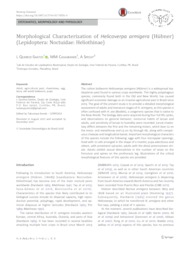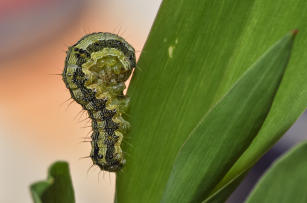Embrapa Cerrados
Morphological characterization of Helicoverpa armigera (Hübner) (Lepidoptera: Noctuidae: Heliothinae).
Morphological characterization of Helicoverpa armigera (Hübner) (Lepidoptera: Noctuidae: Heliothinae).
Autoria: QUEIROZ-SANTOS, L.; CASAGRANDE, M. M.; SPECHT, A.
Resumo: Abstract: The cotton bollworm Helicoverpa armigera (Hübner) is a widespread lepidopteran pest found in various crops worldwide. This highly polyphagous species, commonly found both in the Old and New World, has caused significant economic damage as an invasive agricultural pest in Brazil since 2013. The goal of the present study is to provide a detailed morphological assessment of adults and immature stages of H. armigera, as this species is often confused with H. zea (Boddie), a congeneric species that is native to the New World. The biology data were acquired during four full life cycles, and observations on general behavior, nocturnal habits of larvae and adults, and sensitivity of larvae to humidity were recorded. Larval chaetotaxy differs between the first and the remaining instars, which bear L2 on the meso- and metathorax and L3 on A3 through A6, along with conspicuous chalazae and longitudinal bands. Important morphological characters of this species include the following: eggs with four micropylar openings, lined with 12 cells arranged in the shape of a rosette; pupa adecticous and obtect, with prominent spiracles; adults with the distal antennomere striate. Adults exhibit sexual dimorphism in the number of setae on the frenulum and spines on the prothoracic leg. Illustrations of the critical morphological features of this species are provided.
Ano de publicação: 2017
Tipo de publicação: Artigo de periódico
Unidade: Embrapa Cerrados
Palavras-chave: Algodão, Avaliação morfológica, Lagarta, Lepidóptero, Praga de planta


